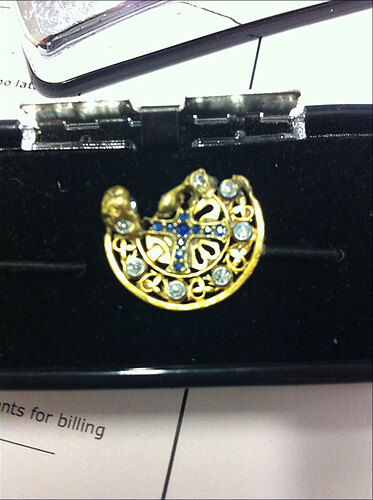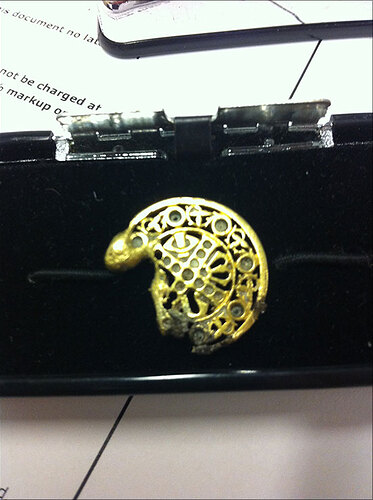All, This may be a bit out of sorts but this gentleman, who is an
acquaintance of mine, has a problem that needs solving. I am sending
you the text of an email from him in the hopes that someone can
help. Cheers, Don in South Florida
Was participating in the Python Challenge and found a gold pendant
while in the swamps.
Pictures are attached.
Turns out that we were in an area about 300 yards east of the
Valujet crash site (May 11 1996) and in the debris field area of the
Eastern Flight 401 (December 29 1972)
Took it to a jeweler and confirmed the gold is gold and the diamonds
are diamonds. Cut on the diamonds are rose cut. Style out dated and
not that common anymore.
A portion of the pendant/medallion has been melted from something.
The symbols are the big kicker. Each of the three visible arms of
the square cross have different symbols. One looks familiar.
Did some checking into Gallic, Celtic, Catholic Church, Papal
symbols, Greek Orthodox, Russian Orthodox, Saints symbols, etc. Have
not found a match yet. The leaves on it (grouped in threes) to not
follow what most Gallic and Celtic designs show.
Goal is to find a little out about it. If it is from one of the two
crashes, I would like (strongly) to get it back to the rightful
heirs. Would be some really good karma for all involved.
Please feel free to forward this to anyone that may have some
insight on the symbols and design.
Truly,
Mark Rubinstein

